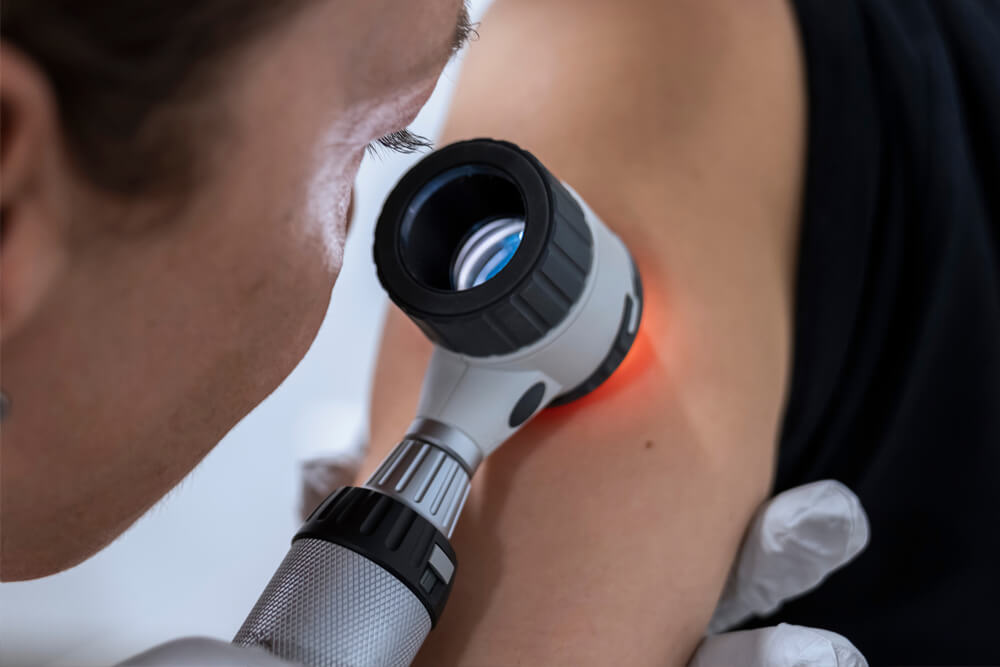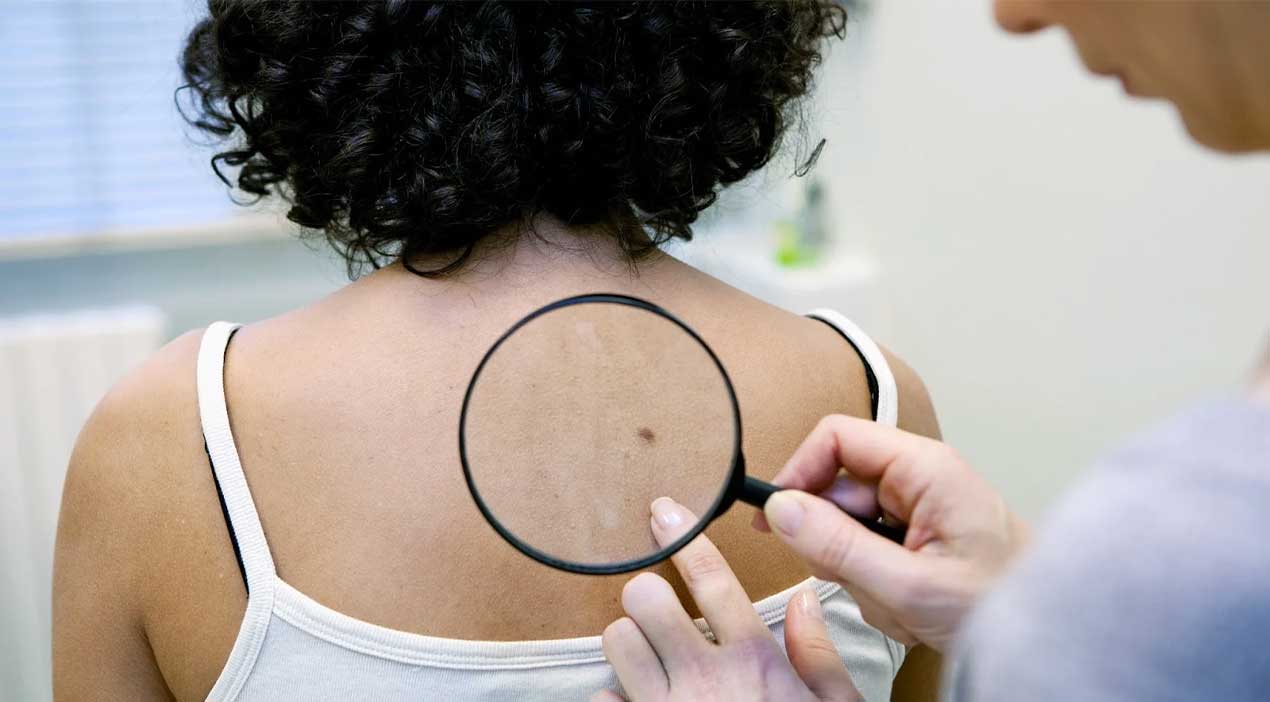
Do you know how to spot melanoma symptoms and signs? With early detection, you can greatly increase your chances of surviving this serious form of skin cancer.
While it accounts for only about 1% of all skin cancers, melanoma causes a large majority of skin cancer deaths. According to the American Cancer Society, nearly 100,000 new melanomas will be diagnosed in 2023.
In this blog article, you’ll learn what skin changes to watch for and when to have a suspicious spot checked by a doctor. We’ll also discuss how melanomas are treated and the outcomes for patients.
What is melanoma?
Melanoma is a serious form of skin cancer that begins in cells called melanocytes. These cells produce melanin, the pigment that gives skin its color. Melanomas can develop anywhere on your body but are found most often in areas that get exposed to the sun, like your face, back, arms, or legs.
While the exact cause isn’t always clear, we do know that regular exposure to ultraviolet (UV) radiation from the sun or tanning beds increases your risk of developing melanoma. So wearing sunscreen and limiting your exposure to UV rays is important to reducing your risk.
Melanoma is more dangerous than other forms of skin cancer because it can spread quickly to other parts of your body if not treated immediately. That’s why early detection is so crucial and could save your life.
Melanoma symptoms and signs to look for
Melanoma signs can appear in many different colors, shapes, and sizes. It can present as a change in an existing mole or as an unusual pigmented growth or spot on your skin. About 20–30% of melanomas develop in existing moles, while 70–80% percent appear on normal skin.
Any spot that is new, different, or odd-looking should be checked out by a dermatologist. For women, melanoma spots often appear on the legs. For men, they most often develop on the torso. But remember, these spots or mole changes can occur anywhere on the body, not just the areas that get sun exposure.
The ABCDEs of melanoma symptoms
An easy way to remember the signs of melanoma is with the acronym ABCDE:
- A for Asymmetry. Most melanomas are asymmetrical, meaning if you were to draw a line down the middle of the spot, the two sides wouldn’t match.
- B for Border. The borders of a melanoma are often uneven or rigid, whereas regular moles tend to have smooth, even borders.
- C for Color. More than one color appearing in a mole or spot can indicate melanoma. They can be shades of brown, tan, or black and even develop into red, white, or blue.
- D for Diameter (or Dark). Spots the size of a pencil eraser or larger should be checked out immediately. Also, look for any spots or moles that are darker than others, which can be another sign of melanoma.
- E for Evolving. Any mole or spot that evolves or changes in size, shape, or color, or one that bleeds, itches, or crusts over, can be a sign of melanoma.
While most moles and skin spots are nothing to worry about, melanomas can be life-threatening. Checking your body regularly for potential melanoma symptoms and seeing a dermatologist yearly for a professional skin exam can help you with early detection and treatment.
How skin cancer is diagnosed
Staying vigilant and checking for any suspicious spots on your skin is the first line of defense against melanoma. But seeing a dermatologist regularly is also essential for early detection, especially if you’ve had any type of skin cancer before.
A dermatologist is a doctor who specializes in skin, hair, and nails, and the inside of the mouth, nose, and eyelids. They diagnose and treat various diseases, including acne, eczema, psoriasis, and skin cancer.
If you have any new or changing spots or other common melanoma symptoms you’re concerned about, an experienced dermatologist can examine them and determine if any additional tests need to be done. They can also take photographs of your entire body to use as a baseline to compare in future exams to look for any changes in the skin over time.
Why early melanoma detection is so important
While melanoma is the most dangerous type of skin cancer, early detection and new treatment options greatly improve patient outcomes. With early melanoma detection, patients have a 99% 5-year survival rate, according to the Skin Cancer Foundation.
The treatments for melanoma depend on the stage of the disease, the location of the tumor, and a person’s overall health. Typical treatments include:
- Surgery to remove the melanoma
- Targeted therapy
- Immunotherapy
- Chemotherapy
- Radiation
You know your body best and can often tell when something doesn’t seem right. If you are concerned about any area of your skin, don’t hesitate to get it checked out by an experienced dermatologist.
The dermatology team at LMH cares about your skin health
If you notice anything on your skin that resembles the melanoma symptoms listed above or have any other concerns, the dermatology team at Logansport Memorial Hospital is here to help. We offer comprehensive medical, surgical, and cosmetic dermatology services and treatments for all types of skin conditions.
Whether your concern is medical or cosmetic, our dermatology providers will work with you on a customized treatment plan to get you looking and feeling your best.


